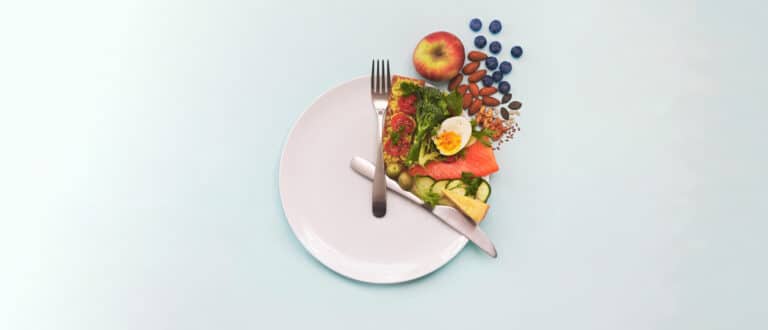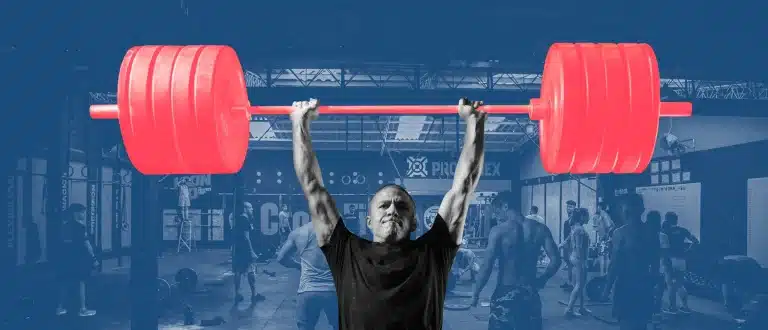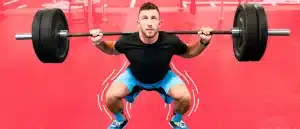Exactly How Many Calories Do You Burn Lifting Weights?
In a sea of reasons to strength train (build strength, gain functional fitness, and increase longevity to name a few), calorie burn doesn’t usually get much attention. Yet, weightlifting can have powerful effects on fat loss.
So how many calories do you burn lifting weights? How does strength training compare to cardio workouts? And exactly what should your workout routine look like to maximize fat loss? Let’s dig in.
Does Lifting Weights Burn Calories?
Yep, weight training burns calories. Your body inherently burns calories at rest, so no matter what you do—whether you’re climbing the stairs, having sex, sitting at your desk, or sleeping—you’re burning calories. Of course, that calorie burn increases with activity, and some activities burn more calories than others.
Categorically, lifting weights is just okay at burning calories. Traditional strength training burns more calories than easy everyday activities like gardening or doing the laundry, but fewer calories than an average cardio session.
How Many Calories Do You Burn Lifting Weights?
Let us be clear: it depends. How many calories you burn depends on how much you weigh (the more you weigh, the more you’ll burn) and the intensity of your workout (which you can boost by tweaking a few elements of your routine).
For example, here’s how many calories people at different weights can expect to burn for 30 minutes of general, moderate-intensity weight lifting, according to Harvard Medical School (1):
- A 125-pound person will burn 90 calories.
- A 155-pound person will burn 112 calories.
- A 185-pound person will burn 133 calories.
Increase your intensity, however, and your calorie burn will nearly double. The calorie burn for 30 minutes of vigorous weight lifting (1):
- A 125-pound person will burn 180 calories.
- A 155-pound person will burn 216 calories.
- A 185-pound person will burn 252 calories.
If you’re thinking this is vague, it is. We don’t know the specifics of these routines, but what is clear is the more intense your strength training routine is, the more calories you burn.
If you want a more exact estimate of how many calories you burn during a particular workout, try a calories burned calculator like the Omni calculator. It converts your activity to METs (metabolic equivalent of a task) and pumps out the average calories burned for your weight.
Calories Burned Lifting Weights vs. Cardio
If you want to lose weight should you prioritize strength or cardio? Here’s how it breaks down.
Cardio burns more calories during a workout
In general, you’ll burn more calories from doing cardio than weightlifting. For example, according to Harvard Medical School, general weight lifting burns about four calories per minute on average; whereas, a brisk walk (4.0 miles per hour) burns about six calories per minute (1). This means your usual run on the treadmill or spin around the neighborhood crushes traditional strength training for calorie burn.
Strength training increases your metabolism
Muscle is an expensive tissue, meaning it requires a lot of energy to maintain and thus burns more calories at rest than fat. Since strength training has the unique capability of helping you build and maintain muscle, it can increase your resting metabolic rate (2)—boosting the number of calories you burn even when you aren’t working out.
Strength training burns more calories after a workout
Strength training taps into excess post-exercise oxygen consumption (or EPOC)—when your body burns more calories after a workout to recover, repair, and return to its pre-exercise state. One study found that weight lifting and high-intensity cardio training are more effective for triggering EPOC than steady-state cardio (3).
The effects of EPOC can last for up to 24 hours, according to Dr. Martin Gibala, a muscle physiologist and professor at McMaster University in Hamilton Ontario. “We’ve measured it in the laboratory and found that you have a higher metabolic rate for a period of time in recovery (which adds up over time). In our lab, we’ve seen that high intensity workouts can burn just as many calories over 24 hours as a longer, more traditional workout,” he said on an episode of Found My Fitness.
Do both to boost fat loss
Even though strength training burns fewer calories than your average cardio session, a combination of strength and cardio can be more effective for fat loss. Why? Aerobic training alone can reduce lean muscle mass (4), giving up muscle for precious energy. The problem is muscle plays an important role in metabolism; lose muscle and your metabolism slows to a crawl (2).
By doing a combo of cardio and strength training, you can keep your metabolism humming by maintaining and building muscle, while burning loads of calories through your aerobic sessions—effectively turning your body into a calorie-burning machine.
How to Burn More Calories While Lifting Weights
In an ideal world, you’d be able to complete a minimum of 180 minutes of steady-state cardio a week, three days of heavy strength training, and a HIIT session or two. But let’s face it, most people don’t have the time. That’s where tweaking your routine to combine strength and cardio into one high-intensity session can kill two birds with one stone.
We’ll hedge by noting, if your goal is to specifically build strength, hypertrophy, or power, this method is not ideal. It’s also not perfect for methodically building endurance through intentional zone 2 training, and VO2 max sessions. When you manipulate the specific variables of any routine, there’s going to be some give-and-take to get to your priority. If that priority is weight loss with minimal time in the gym, then make this your bread and butter.
Prioritize compound exercise
The more muscle mass you use, the more calories your body needs to fuel that movement. For example, isolation exercises that focus on only one muscle at a time—like bicep curls—won’t require anywhere close to the same amount of calories as a compound movement that works multiple muscles at a time—like lat pulldowns.
One study found that lat pulldowns burn 20 percent more calories than bicep curls, and squats burn 35 percent more calories than leg extensions (5). To use more muscle groups during your workouts, do compound exercises like squats, deadlifts, hip thrusts, lunges, step-ups, chest presses, overhead presses, rows, pullups, dips, and pushups.
Lift lighter weight for more reps
When compared to lifting heavier weights for fewer reps, lifting lighter weights for more reps nearly doubles calorie burn, according to a study published in the Journal of Strength and Conditioning (6). If you’re worried about your gains taking a hit, don’t be. Several studies have confirmed you can build the same amount of muscle whether you’re using light or heavy weights (7).
However, there is a point where the weight is too light for gains (8). The TL;DR: you still need to push yourself hard enough to see results. Find a weight that’s somewhere between 40 to 60 percent of the maximum weight you could lift for that exercise, and rep it out until you could only eke out one to two more reps. For most people, this should land somewhere in the 15 to 30-rep range. If you can lift over 30 reps, it’s time to level up in weight.
Try circuit training
The most important thing you can do to burn more calories is to improve your workout efficiency. During a traditional strength training workout, a lot of time is spent resting between sets—this is important if your goal is to maximize muscle growth and strength, but not so helpful for burning calories.
By using circuit training to your advantage, you can increase the reps, sets, and intensity you put in during your workout, without having to increase your time at the gym. Circuit training has been shown to provide similar increases in muscle mass and strength to traditional strength training while cutting body fat in a fraction of the time (9).
To do it, create two to three mini circuits by stacking each with four compound exercises. Complete the exercises in each circuit back-to-back with a 15 to 20-second breather to transition between exercises. Repeat each circuit three to five times before moving on to the next circuit.

















